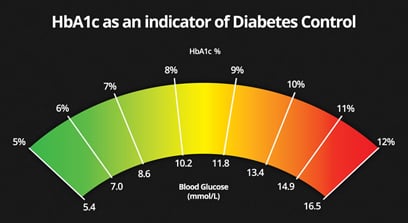|

|
|
Everyone is different – so how do you reduce HbA1c and maintain it?
Diabetes Forum member Andrew Colvin did exactly that. Within 4 months, Andrew reduced his HbA1c from 10.5% to 5.8% by following these very simple tips: don’t eat rubbish, more exercise, fewer carbs and no full fat soda. |
|
|
|
|
|
It’s not only Andrew who has been getting on top of his HbA1c, members Marilyn, minimam and Avocado Sevonfold have all reduced their HbA1c by over 2% in just 3 months.
HbA1c reflects average blood glucose levels over the past 2 to 3 months, and provides a useful longer-term gauge of diabetes control.
A reduced HbA1c lowers the risk of serious diabetes complications. In fact, research has shown that decreasing or improving HbA1c by just 1% slashes the risk of retinopathy, neuropathy and kidney disease by 25%.
For people with diabetes, an HbA1c level of 48 mmol/mol (6.5%) is considered good control, although some people may prefer their numbers to be closer to that of non-diabetics.
|
|
|
|
|
|
|
Not sure about HbA1c units? In 2011, the way HbA1c values are reported switched from a percentage to a measurement in mmols/mol. |
|
|
|
|
|
|
|
